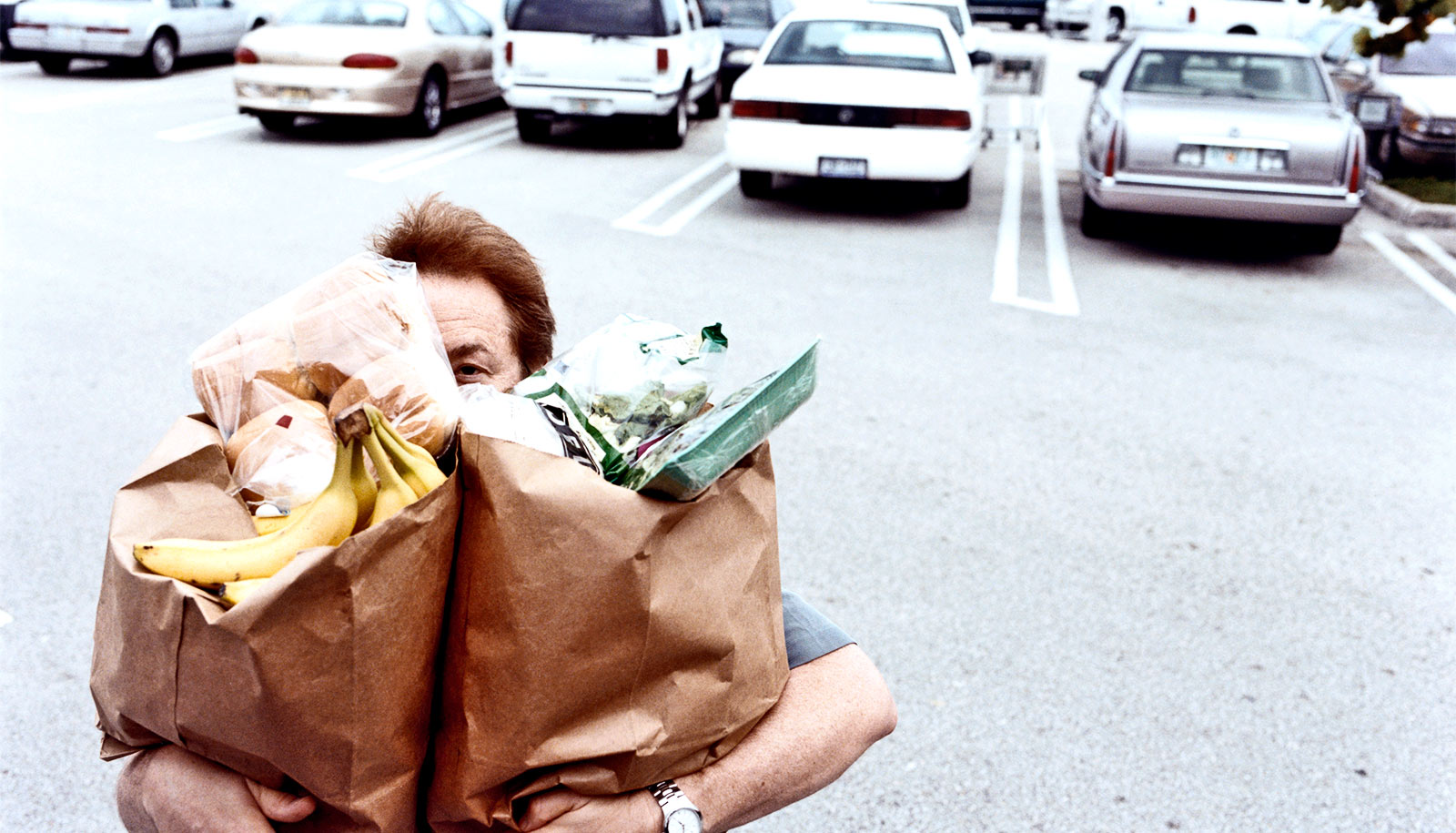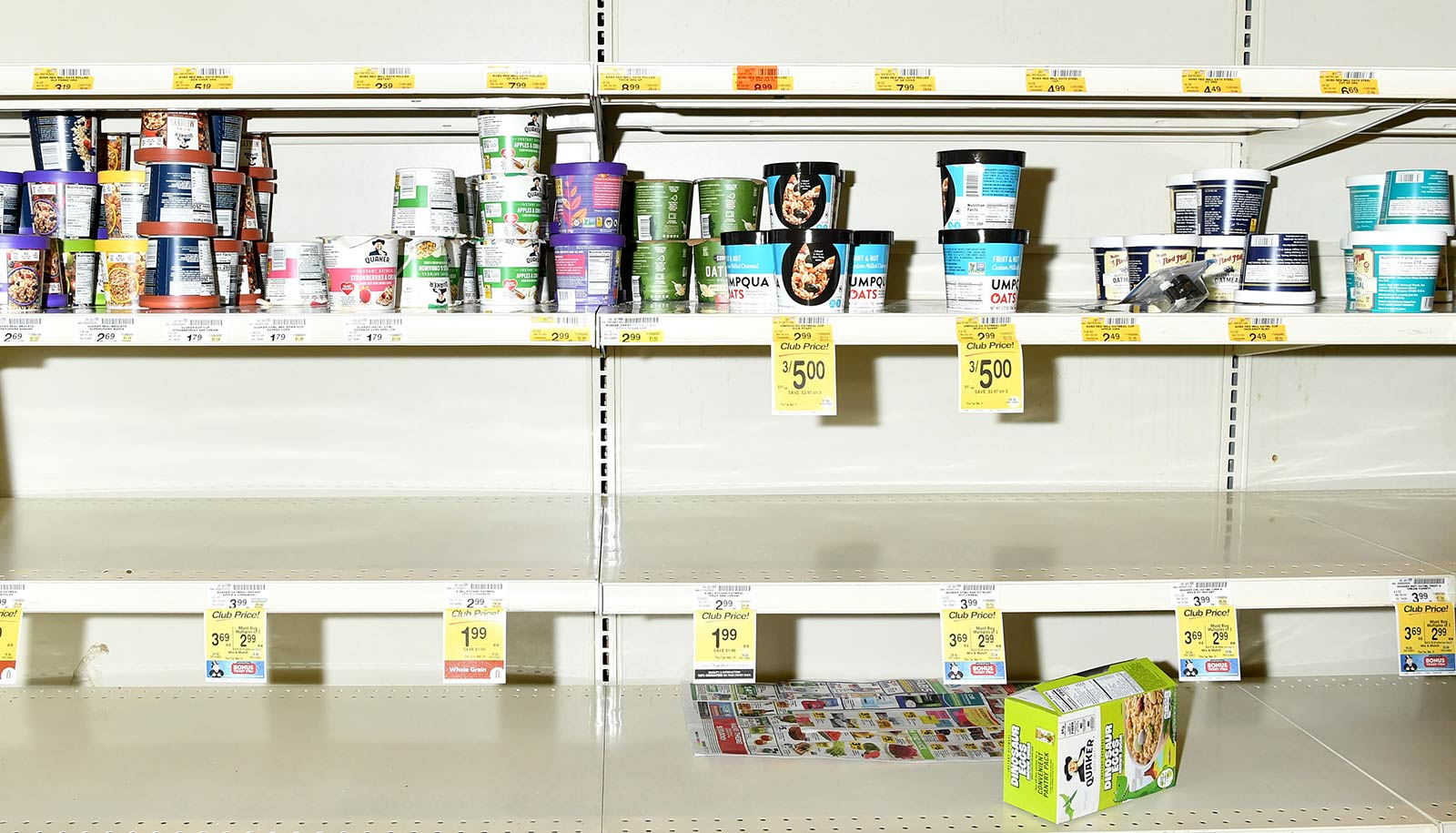The COVID-19 pandemic continues to affect the people who buy and sell food, including constraining supplies, spiking prices, and hurting restaurants.
“The food economy has been incredibly resilient so far, but now that we’re more than half a year into this pandemic, the cracks are really starting to show,” says Trey Malone, an assistant professor of agriculture, food, and resource economics in the College of Agriculture and Natural Resources at Michigan State University.
“For me, one of the biggest pandemic concerns always has been food security for lower-income households. Households that earn less than $20,000 spend nearly 40% of their income on food, and households that earn $20,000-$39,000 spend more than 20%,” he says.
“Even a small increase in food prices can mean that these people will confront difficult decisions.”
Here, Malone answers questions about the economics of food in the coming months and how the COVID-19 pandemic will affect typical seasonal patterns:
Will there be enough food products around the holidays?
So long as expectations are consistent, US food supply chains are incredibly capable of reaching their end consumers. The holidays will be a mixed bag in terms of how the pandemic will alter what people want. For example, with Halloween on the horizon, I’m not expecting candy sales to reach their normal levels given restrictions on trick-or-treating and gatherings.
With many restaurants only partially reopened, how has the supply chain changed to direct products to consumers rather than businesses?
This story is different for every industry. Restaurant sales have slowly regained some of the ground they lost earlier in the pandemic, and many restaurants already have closed. It’s too soon to say how many restaurants will remain shuttered, though eating-out expenditures in May 2020 were 37% lower than May 2019. Overall, US food spending in June 2020 was $12 million less than the prior year. Much of that change in expenditures has come from the near collapse of some restaurant business models. I’m even more concerned about moving into the winter months, where outdoor seating will be less of an option. The smaller farm businesses that focused on sales exclusively to restaurants have struggled, though many have developed online platforms to find end consumers without a restaurant intermediary.
Is this change sustainable if the pandemic persists through the fall and winter?
A longer pandemic will put more and more pressure on restaurants, which already have been operating on razor-thin margins. The food economy has been incredibly resilient so far, but now that we’re more than half a year into this pandemic, the cracks are really starting to show, particularly for restaurants. For the good of the entire agricultural economy, there is an incredible need to find a way for these restaurants to keep their doors open—either through sales or through government assistance.
The United Nations recently reported global food prices rose for the third straight month. How does even a small increase make an impact on the food supply chain?
Increases in prices are felt differently for individuals across the system. This is especially true when food prices change for unique events, such as a pandemic. For me, one of the biggest pandemic concerns always has been food security for lower-income households. Households that earn less than $20,000 spend nearly 40% of their income on food, and households that earn $20,000-$39,000 spend more than 20%. Even a small increase in food prices can mean that these people will confront difficult decisions.
What happens if food prices continue to rise?
Rising food prices have long been an important source of social unrest, though massive swings in prices have been a staple of agricultural production for a long time. I would keep an eye on international trade. If trade routes stay open, I doubt the price of food will become the root cause of political stability; however, if governments opt to close trade routes in response to rising food prices, I am concerned about the outcome. Centuries of economic research suggest that specialization and trade improve the well-being of people. While this might feel counterintuitive to some, trade restrictions shrink the overall size of the pie, which will facilitate even more income inequality and global unrest.
What happens when there is product but not enough material to store or transport that product to the consumer, for example, aluminum cans, lids, etc.?
We’re already seeing that many companies have opted to shed some of their least popular offerings in favor of keeping the more popular stuff on the shelf. Campbell’s Soup has fewer offerings right now, for example. In addition, businesses are especially innovative when prices are prohibitively high. For example, I’ve bought a lot of plastic milk jug “growlers” at my local craft brewery.
How are current environmental crises like wildfires going to impact the food supply chain in the coming weeks and months?
These developments are extremely troubling for the food system. The Western United States is incredibly important to your plate. In fact, nine of the top 10 counties in the US that ship the most food are in California. Los Angeles County is especially important, as it both ships and receives more kilograms of food than any other county. Climate change already has become top of mind for many of these producers as water access has become an important issue. Be sure to keep an eye on California’s Central Valley; it produces many high-value specialty crops and is entering its busiest season.
Source: Michigan State University



